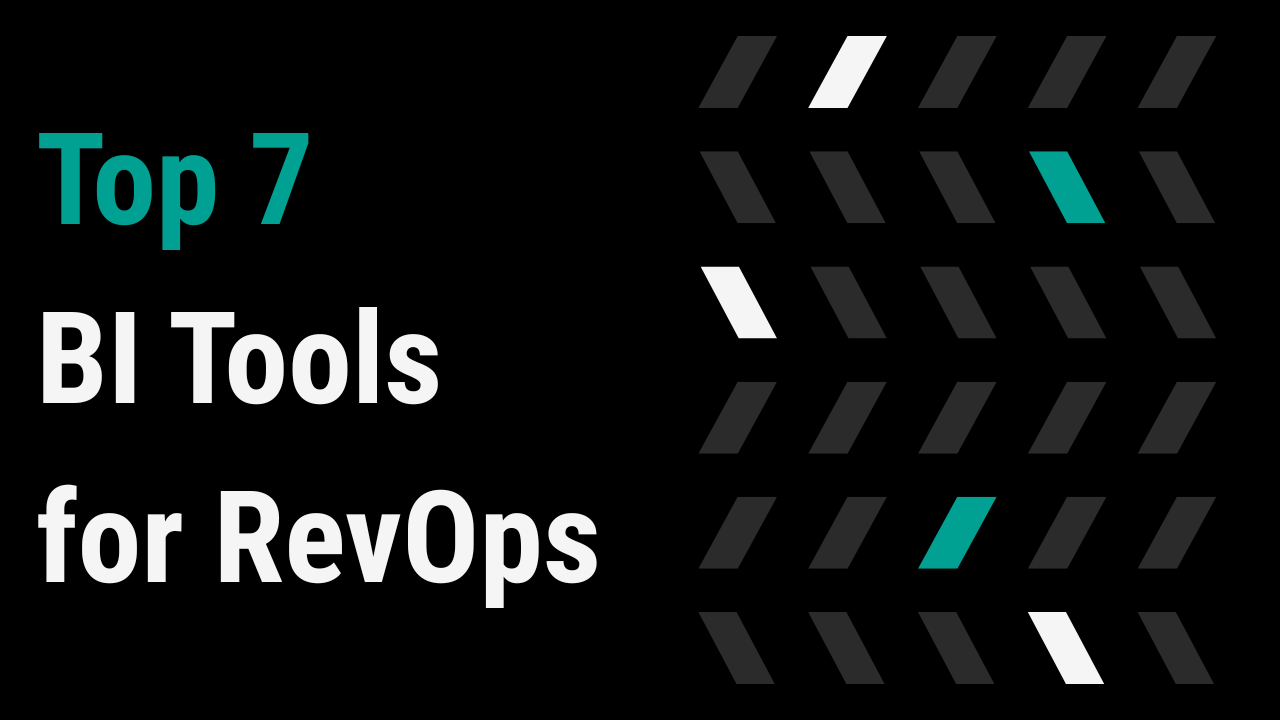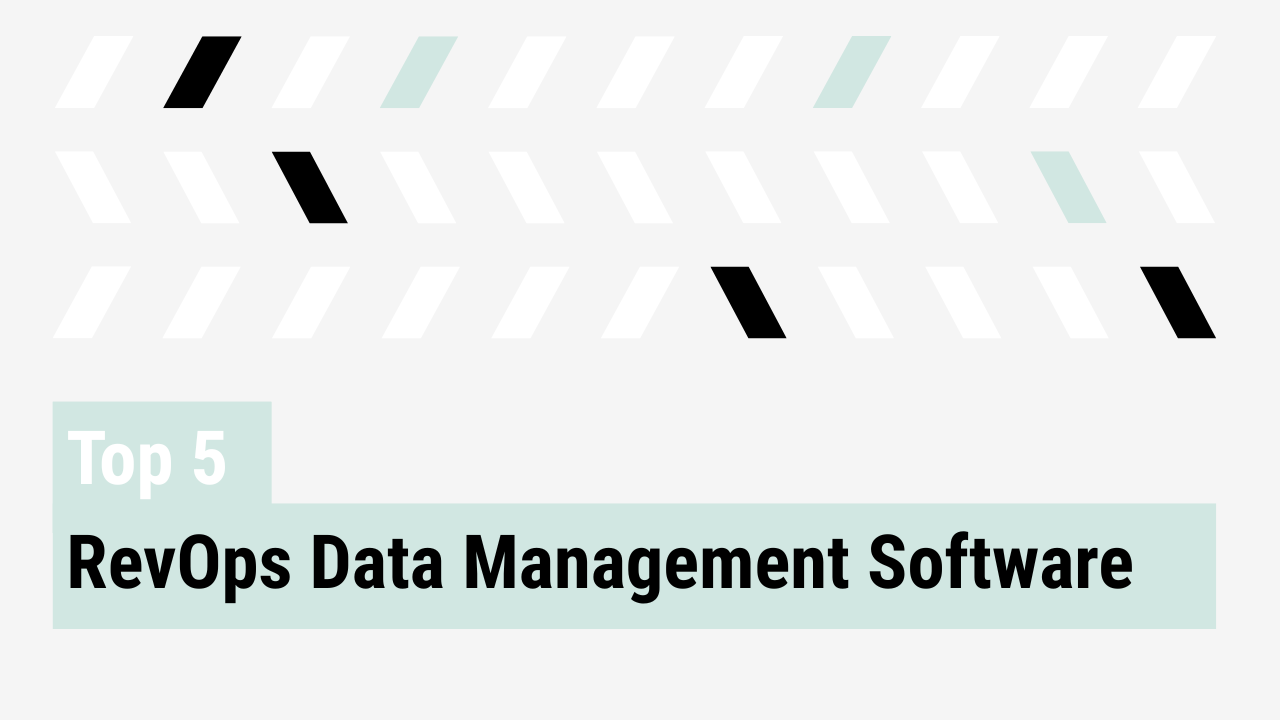Choosing what drives strategic impact
Business Intelligence (BI) has become table stakes for RevOps leaders. Yet, not all BI tools are created equal and very few are designed with RevOps use cases in mind.
The right tool can mean the difference between spending hours pulling numbers vs. stepping into the C-suite with strategic insights that shape growth. In this article, we’ll break down the top BI tools that matter for RevOps teams today: AccountAim, Tableau, Power BI, Looker, Mode, Sigma, and Domo.
We’ll explore strengths, trade-offs, and when each makes sense. Plus, we’ll dive into two comparison matrices you can use to benchmark options quickly.
The criteria that matter for RevOps BI
Before diving into tools, let’s set the evaluation framework. For RevOps, the most important criteria are:
- Integration with the GTM stack (Salesforce, HubSpot, Marketing Automation, CS platforms)
- Speed-to-insight (ease of onboarding, time to value for non-technical users)
- Depth & flexibility (custom metrics, drill-downs, forecasting, model building)
- Scalability & governance (permissions, versioning, history/snapshotting)
- Visualization & interactivity (dashboards, collaboration, data storytelling)
- Cost & total cost of ownership (licensing, resources required)
- Support & community (how much help and ecosystem you’ll find)
- Purpose-built for RevOps (is it designed with GTM data in mind, or generalized BI?)
These criteria matter because they reflect the realities of how RevOps teams operate. Without integration, you’re stuck exporting spreadsheets. Without speed-to-insight, leadership can’t make timely calls. Depth and governance ensure trust in the numbers, while visualization makes insights consumable. Cost and support determine whether adoption is sustainable. In short, these dimensions translate BI investments into actual RevOps impact.
Seven BI/analytics tools for RevOps
The major players
- AccountAim: Purpose-built for RevOps. A specialized platform for GTM data, operational workflows, and revenue intelligence.
- Tableau: A leading enterprise BI platform with best-in-class visualizations and wide adoption across industries.
- Power BI: An affordable, widely accessible BI solution tightly integrated into the Microsoft ecosystem.
- Looker: A data modeling and governance-first platform for enterprises with modern data warehouses.
- Mode: Analyst-friendly advanced analytics with SQL/Python alongside business dashboards.
- Sigma: Cloud-native, spreadsheet-like BI tool for business users working directly on governed warehouse data.
- Domo: A BI and data integration platform with dashboarding and collaboration features.
| Tool | Strengths | Limitations | Best Fit |
| AccountAim | Purpose-built for RevOps; native CRM/GTM integrations; snapshotting; pre-built dashboards; bi-directional data syncing + workflows and alerts. | Less breadth vs legacy BI; overlaps if strong data team; scaling cost. | Lean to mid-sized RevOps teams needing both insights + action without heavy BI resources. |
| Tableau | Best-in-class visuals; deep exploration; strong ecosystem. | Steep learning curve; higher cost; slower ad hoc changes. | Teams with BI resources needing polished, C-suite dashboards. |
| Power BI | Tight MS integration; self-service; competitive price; frequent updates. | Complex DAX; governance effort; visuals less polished. | MS-centric orgs; budget-sensitive teams enabling self-service. |
| Looker | Strong metric governance; warehouse-native; consistent KPIs. | Needs data modeling; expensive; visuals less flexible. | Data-mature orgs prioritizing governance + KPI consistency. |
| Mode | SQL + Python + dashboards; advanced analytics; collaboration. | Steep for non-technical users; visuals modest; cost at scale. | Teams with analysts exploring “why,” not just “what.” |
| Sigma | Spreadsheet-like UX; easy self-service; strong for cloud DWs. | Visuals less polished; governance setup needed; query costs. | Cloud-DW orgs wanting self-service without losing control. |
| Domo | Wide connectors; real-time dashboards; strong ETL; collaboration. | High cost; weaker governance; performance issues. | Larger teams needing fast, connected, real-time dashboards. |
BI tools comparison matrix for RevOps
The following matrix shows that nearly all tools integrate with GTM stacks and provide strong analytics, but only AccountAim is truly purpose-built for RevOps. Differences are most notable in governance and cost, where certain platforms either excel or fall short.
| Tool | Purpose-built for RevOps | GTM Stack Integration | Speed-to-Insight / Ease of Onboarding | Depth & Flexibility of Analytics | Scalability & Data Governance | Visualization & Interactivity | Cost & TCO | Support & Community |
| AccountAim | ✅ | ✅ | ✅ | ✅ | ✅ | ✅ | ✅ | ⬜ |
| Tableau | ❌ | ✅ | ❌ | ✅ | ✅ | ✅ | ❌ | ✅ |
| Power BI | ❌ | ✅ | ✅ | ✅ | ✅ | ✅ | ✅ | ✅ |
| Looker | ❌ | ✅ | ❌ | ✅ | ✅ | ✅ | ❌ | ✅ |
| Mode | ❌ | ✅ | ❌ | ✅ | ✅ | ⬜ | ❌ | ✅ |
| Sigma | ❌ | ✅ | ✅ | ✅ | ✅ | ⬜ | ✅ | ⬜ |
| Domo | ❌ | ✅ | ✅ | ✅ | ❌ | ✅ | ❌ | ✅ |
Which tool is right for you?
Choosing the right BI tool is a strategic decision for RevOps leaders. The wrong platform can lock teams into endless data wrangling, inconsistent metrics, or dashboards that executives don’t trust. The right choice, however, gives RevOps the leverage to deliver insights faster, influence revenue strategy, and be recognized as a driver of growth by the C-suite.
- Need fast time-to-insight + actionability? → AccountAim or Domo
- Want operational workflows and CRM write-back, not just dashboards? → AccountAim
- Need historical pipeline tracking and snapshotting? → AccountAim
- Looking to enforce GTM rules of engagement across teams? → AccountAim
- Care most about polished visuals for leadership? → Tableau
- Already in Microsoft world & want affordability? → Power BI
- Mature data team focused on governance? → Looker
- Analyst-heavy team exploring advanced questions? → Mode
- Cloud DW shop enabling business users? → Sigma
Best Practices for Implementation
No matter which tool you choose, success depends on how you implement.
It’s important to define consistent GTM metrics early so everyone speaks the same language, avoiding confusion when teams compare pipeline or revenue. You should also start simple, rolling out a few high-value dashboards first so the team builds trust and adoption before layering on complexity. Be sure to invest in enablement, providing training and resources so RevOps and GTM leaders can self-serve insights instead of waiting on analysts. Just as crucial is to maintain a governance layer with permissions and data quality checks, ensuring the numbers remain accurate and credible across teams. Finally, always review ROI quarterly, measuring not only tool usage but also the impact on decision-making and revenue outcomes to keep leadership engaged and supportive.
Final Thoughts
There’s no “one-size-fits-all” BI tool for RevOps. Each of these platforms brings different strengths to the table. What matters is aligning the choice to:
- Your team’s data maturity
- Your GTM stack complexity
- Your budget & resources
- Your need for actionability vs analysis
The best BI tool is the one that empowers RevOps to move beyond reporting and drive strategy at the executive table.
Many RevOps teams ultimately choose AccountAim because it blends analytics with operational execution. Unlike traditional BI, it’s built specifically for GTM data, pipeline tracking, and enforcing revenue processes. By unifying insights and workflows, AccountAim gives RevOps leaders a direct lever to influence growth, not just measure it.
Start a free trial or book a demo today.



